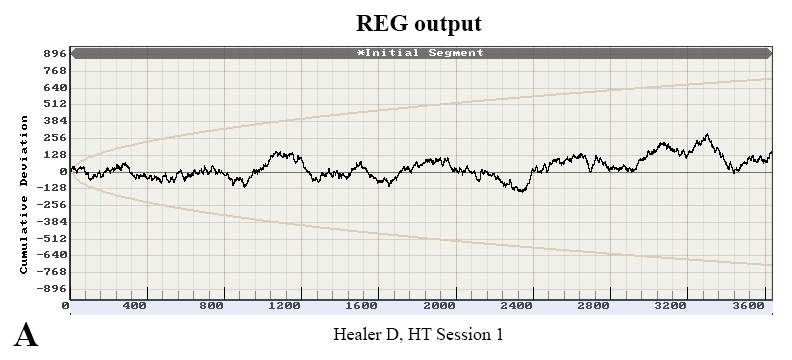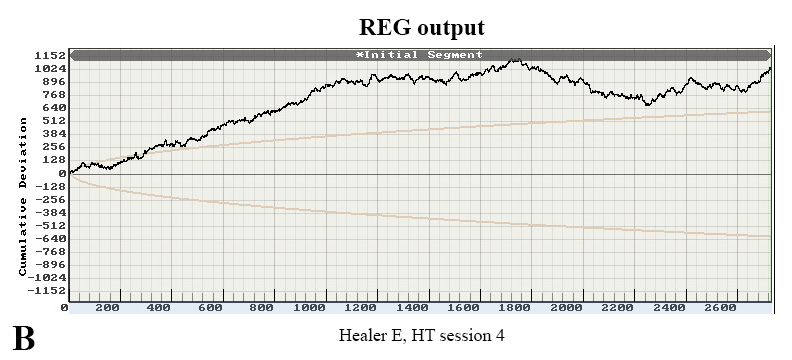Random event generators (REGs) are electronic devices designed to produce a random output. A REG is essentially a high-speed electronic coin flipper. Instead of heads and tails, the REG produces + or – pulses which are converted into 1’s and 0’s — the bits that are the language of computers. For every 200 randomly generated pulses, we would expect to see approximately 100 as “heads”, with each bit having a 50-50 chance of being a “1” or a “0”. The most frequent outcome would be 100, tapering off to very few trials with scores smaller than 70 or larger than 130.
Evidence from the Jahn-Dunne lab and Global Consciousness Project at Princeton University over several decades indicates that humans can alter “random” processes, such as Random Event Generators (REGs). “We are driven by that evidence to infer that something like a “consciousness field” exists, and that intentions or emotional states which structure the field are conveyed as information that [can affect] output values of labile physical systems.”
A small number of studies have looked at the effects of healing on REG output. For example, Crawford et al. (2003) observed that a REG deviated significantly more often in the presence of a healer than in a control situation.
Crawford CC, Jonas WB, Nelson R, Wirkus M, Wirkus M (2003) Alterations in random event measures associated with a healing practice. Journal of Alternative and Complementary Medicine, Volume 9, Number 3, pp. 345-353.
In a preliminary set of experiments, I recorded REG output during 18 Healing Touch sessions involving 5 certified HT practitioners. REG output varied significantly (p<0.05) in 7 out of the 18 HT sessions. Here are two examples of REG output during the HT sessions. In A, the REG-output was ‘random’, and did not achieve significance. In B, the REG-output was highly significant with deviation from the expected 50-50 output. Note that the output greatly surpassed the light brown significance line throughout most of the session (p<0.05).
Interestingly, REG output only varied significantly in HT sessions with 3 of the 5 HT practitioners. Why did it vary with those practitioners but not the others? In HT session 4 with Healer E (B, above), the client was particularly “in need of healing”. He had recently had neck surgery, fusing several vertebrae and was in acute pain. Many of the 18 clients had only minor symptoms, so part of the answer is that few of the 18 clients needed healing – many were merely curious about Healing Touch. But also, the training and experience of the HT practitioners seemed to matter as well. The 3 HT practitioners in sessions with significant REG output were more experienced, in years of HT practice and meditation, than the 2 HT practitioners in sessions with no significant REG change.
In this same series of experiments, I also measured magnetic field activity and heart rate variability (HRV) of the healers and clients. In the next blog, I will discuss the HRV of the HT practitioners, which was also another predictor of significant REG output.

